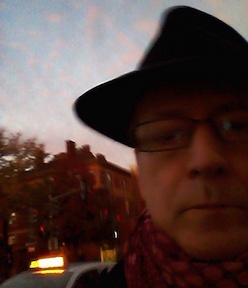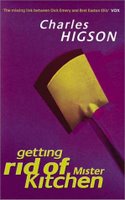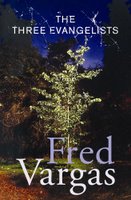
Simon Kernick has 3 novels out, in the U.S., and a couple more in the U.K., but I've just discovered his work through the first of the novels, The Business of Dying. Kernick seems to be doing a quasi-series, in the same way as Deon Meyer--running characters but not the same hero (and in Kernick's case, not the same point of view), as well as doing at least one stand-alone thriller. The Business of Dying is a first-person narrative about a crooked cop: I won't go into too much detail about the structure, since there are a couple of surprises I wouldn't want to deprive anyone of--speaking of that, I don't usually read the plot summaries on the book cover if I can avoid it. I think they ruin the flow of a narrative by (sometimes erroneously) creating expectations outside the narrative's own flow. For the same reason, I don't do plot summaries here, for the most part. Kernick seems to be playing with point of view--one novel in the series shifts from one first-person narrator to another and the third novel is evidently in the third-person in at least the third novel in the series. Without a running hero, the first person is probably hard to maintain--getting into the head of a different character every time, while maintaining the same setting and some of the same characters, sounds a bit difficult, not to speak of gimmicky, in the way of Rashomon (it will be interesting to see whether the novel that does shift point of view falls into that). But back to The Business of Dying, Kernick's novel starts off with a bang (literally) and goes along pretty well for a while, but it gets repetitive and slow toward the middle third. I think the problem may be that he never really made me care much what happened to any of the characters. The main character here (and evidently also in one of the later novels in the series), Dennis Milne, turns out to be very talented or very lucky in tight spots and fights, and as such he's a bit reminiscent of Parlabane in Brookmyre's novels--but not as funny or engaging. By the time the plot picked up again in the last third, I'd almost put the book down as a lost cause. But I'm glad I didn't--when the pace picks back up, there are considerable rewards in excitement and even comedy, along with lots of corpses. A good read, but I'm reserving judgment about Kernick, overall, until I've read one or both of the subsequent novels.











